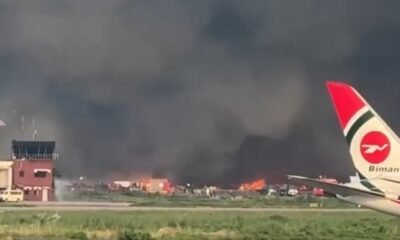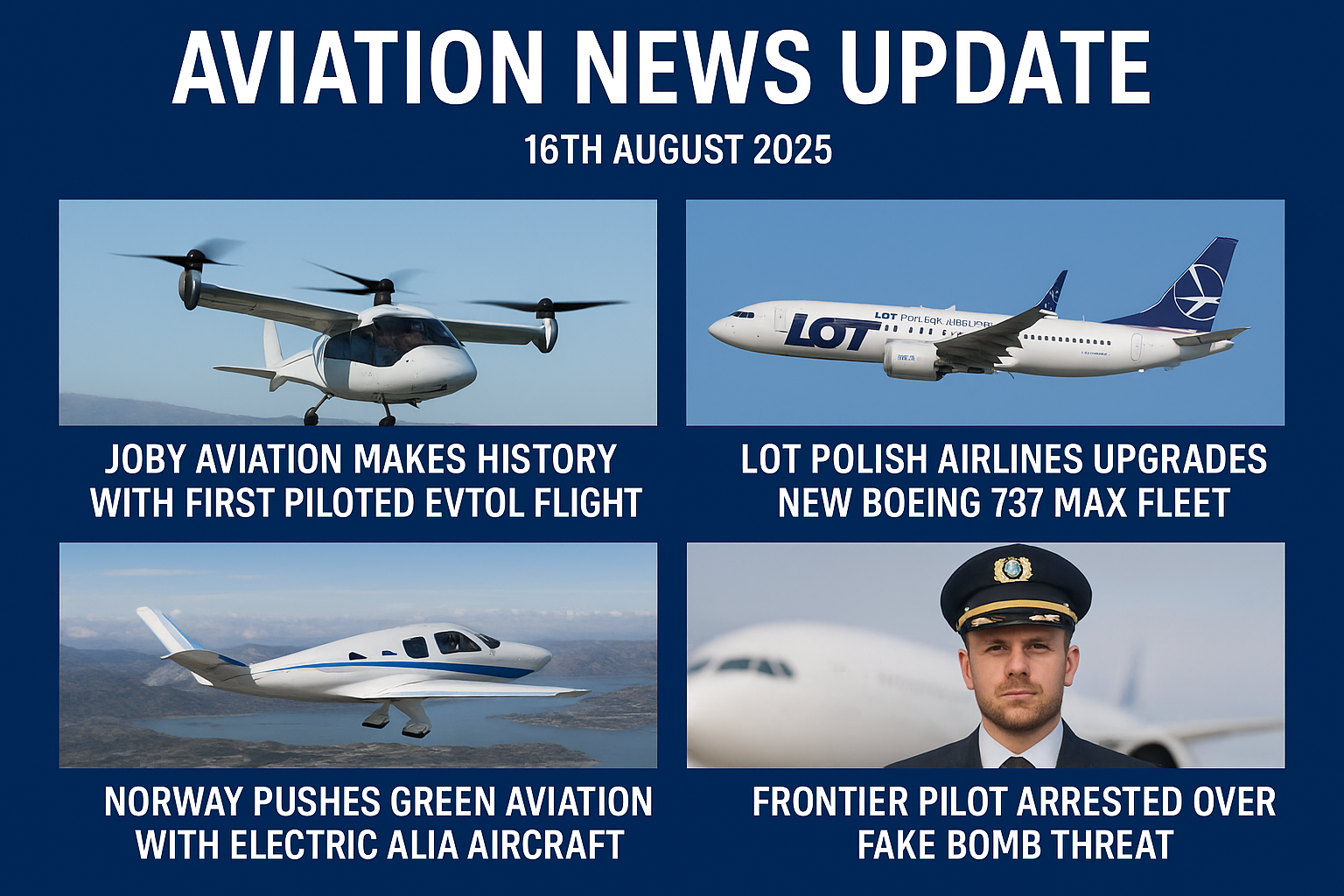AVIATION
Can Helicopters fly and land on top of Mount Everest?
How much does it cost to take a helicopter ride to Mount Everest? What is the highest altitude a helicopter can fly?
Published
2 years agoon
By
Gems Sierra
Re written from an article of Karan Bhatta updated on June 4th;
Mount Everest, that towering giant which recently saw a video displaying a staggering pile of rubbish dumped into its beautiful areas, has long captivated the hearts and minds of adventurers and dreamers alike. Its icy slopes and treacherous winds beckon the brave to test their mettle against nature’s most formidable challenge. Perhaps this is why John Krauker in his personal reminiscence about the Mount Everest disaster, “Into Thin Air” said:
“Everest has always been a magnet for kooks, publicity seekers, hopeless romantics and others with a shaky hold on reality.”
And in this modern age of travel and ease of travel, one might wonder if our mechanical birds, the helicopters, could carry us to this place for the “hopeless romantics”: the Everest, sparing arduous climb and months of meticulous planning and preparation to get to the top of the topmost mountain. The answer is not so simple, for the very forces that make helicopter flight possible conspire against achieving such lofty heights in a chopper.

The Physics and Aerodynamics of Helicopter Flight:
To comprehend why helicopters face limitations in reaching the summit of Mount Everest, it is essential to understand the basic principles of helicopter flight. Helicopters rely on the generation of lift, counteracting the force of gravity through the rotation of their rotor blades. By manipulating the pitch and angle of attack, helicopters can achieve vertical takeoff, hover, and maneuverability.
However, the physics and aerodynamics that facilitate helicopter flight encounter significant challenges in the extreme conditions of Mount Everest. High altitude adversely affects helicopter performance in multiple ways. The reduced air density at high altitudes means the air is thinner, providing fewer molecules to generate lift.
Additionally, lower oxygen levels pose challenges for crew safety and engine performance. Furthermore, the extreme weather conditions at high altitudes, characterized by strong winds, turbulence, and unpredictable weather patterns, make helicopter operations even more precarious.

The Role of Rotor Efficiency:
You see, the rotor of a helicopter is responsible for generating lift, that force that defies gravity and allows our mechanical birds to soar. The rotor blades, as they spin, create a difference in air pressure above and below them, resulting in an upward force that lifts the helicopter into the sky. However, this delicate balance is contingent upon the air’s density, which provides the necessary resistance for the rotor blades to work against.
As we ascend the lofty heights of Mount Everest, the air becomes thinner and less dense. This reduction in air density means that the rotor blades have less substance to “bite” into, making it increasingly difficult for them to generate the lift required to keep the helicopter aloft. The efficiency of the rotor system declines as the air thins, and the helicopter’s ability to maintain altitude and maneuverability is compromised.
In addition to the reduced air density, the extreme cold at high altitudes can also affect the rotor’s performance. The frigid temperatures may cause the rotor blades to become less flexible, altering their aerodynamic properties and further diminishing their efficiency.

Altitude Constraints on Helicopter Performance:
The operational ceiling of helicopters, that invisible barrier that keeps them from soaring ever higher, is a cruel master. Density altitude, a fickle mistress, robs our flying machines of their power as we climb. The interplay of weight, temperature, pressure, and altitude conspire against us, and the dreaded “Death Zone” above 8,000 meters (26,000 feet) holds a vice-like grip on the very air we breathe.
In this zone, oxygen levels are dangerously low, making it extremely hazardous for both crew and engine performance. The lack of oxygen not only affects the engine’s ability to produce power but also puts the pilots and passengers at risk of altitude sickness and hypoxia.
Problems in Oxygen Supply and Engine Performance:
The scarcity of oxygen at such heights is a double-edged sword, cutting both the crew and the engine’s performance. The life-giving air we require is in short supply, and the engine, too, gasps for breath. While modern helicopters are equipped with sophisticated systems to mitigate these concerns, the harsh conditions of Mount Everest demand an exceptional level of oxygen supply. Meeting this requirement becomes increasingly challenging as helicopters ascend to higher altitudes, pushing the limits of current technology and engineering capabilities.
Safety Concerns and Operational Risks:
The risks of flying to Everest’s summit are many, from the treacherous landings and takeoffs on the mountain’s narrow and uneven terrain to the ever-present danger of ice and snow accumulation on the helicopter’s vital components.
Altitude sickness and hypoxia pose additional dangers to pilots and passengers. The lack of oxygen at high altitudes can lead to impaired judgment, decreased cognitive abilities, and even life-threatening conditions. These risks, combined with the unforgiving terrain and adverse weather, make helicopter flights to the summit of Mount Everest an impractical and unsafe endeavor.
Search and Rescue Operations:
As we’ve discussed, the thin air and extreme cold at high altitudes reduce rotor efficiency and engine performance. These limitations restrict the operational ceiling of search and rescue helicopters, often preventing them from reaching climbers in distress at the highest elevations.
Furthermore, the narrow ledges, steep slopes, and crevasses make landing and taking off exceedingly perilous, even for the most skilled pilots. In many cases, there may be no suitable landing site near the location of a stranded or injured climber, forcing rescuers to attempt daring and risky maneuvers to reach those in need.
The extreme weather conditions on Everest also play a significant role in hampering search and rescue efforts. Strong winds, blizzards, and rapidly changing weather patterns can make flying in the region hazardous, reducing visibility and increasing the risk of accidents. These conditions can also hinder communication between rescuers and those in need, further complicating the rescue process.

When the Impossible Came to be Possible:
On May 14th, 2005, French helicopter pilot Didier Delsalle etched his name in the annals of history by achieving the seemingly impossible: landing a helicopter on the summit of Mount Everest. This extraordinary feat not only pushed the boundaries of human endurance but also showcased the incredible capabilities of modern aviation technology.
Preparations before the Flight:
Delsalle’s journey began with meticulous planning and preparation as he sought to overcome the numerous challenges posed by Everest’s extreme altitude and unpredictable weather conditions.
It is common for helicopters attempting high-altitude operations, such as landing at the summit of Mount Everest, to undergo modifications that involve removing certain parts or equipment to reduce weight and increase performance.
- Seat Removal: To reduce weight and increase payload capacity, seats that are not essential for the flight, such as passenger seats, were removed.
- Interior Dismantling: Non-essential interior components, such as panels, carpets, and other furnishings, were also removed to further reduce weight. These modifications aim to maximize the helicopter’s power-to-weight ratio and optimize its performance in the thin air and challenging conditions encountered at high altitudes.
- Equipment Evaluation: The helicopter’s equipment and systems were carefully evaluated to determine what is essential for the mission and what can be removed to reduce weight. Non-essential equipment, spare parts, or additional systems were left behind to lighten the aircraft.

Flying an AS350 B3 Écureuil helicopter, specially modified for high-altitude operations, Delsalle embarked on a daring mission that would test both his skills as a pilot and the limits of his aircraft.
As he ascended the mountain, Delsalle faced fierce winds, sub-zero temperatures, and dangerously thin air, all of which threatened to derail his ambitious endeavor. Despite these obstacles, he remained undeterred, skillfully navigating the treacherous terrain and steadily climbing toward the summit.
Upon reaching the peak, Delsalle made history by successfully landing his helicopter at an altitude of 29,029 feet (8,848 meters), a feat previously thought to be impossible. He held his position for a brief two minutes, just long enough to prove that it could be done, before taking off again and returning to base camp.
After completing the mission, Desalle stated,“The idea was to prove to our customers all the margins they have while they’re using the helicopter in the normal certified envelope, compared to what the helicopter is capable of during the flight test.”
Conclusion:
To sum up, the tale of why helicopters struggle to reach the top of Mount Everest is one of physics, aerodynamics, altitude constraints, and safety risks. Since the speculative feat of Didier Delsalle, no one has ever dared to land on the summit to date.
The limitations of our flying machines are laid bare in the face of nature’s grandest challenge. Yet, we must not lose hope, for the march of progress is relentless, and the future may yet hold new possibilities for reaching the summit of our dreams again.

Frequently Asked Questions:
How much does it cost to take a helicopter ride to Mount Everest?
The cost structure varies depending on whether you are sharing the helicopter ride with a group of up to five people or opting for a private charter. The group cost per person is $ 999 whereas a private charter costs $ 4500.
Why don’t planes fly over Everest?
Even though certain aircraft, like Boeing planes, have the capability to reach higher altitudes. they still do not typically fly directly over Mount Everest. The decision to avoid flying over Mount Everest is primarily based on safety concerns, as the extreme altitude, unpredictable weather patterns, and challenging terrain pose risks to aircraft operation.
Is Everest a no fly zone?
No, Mount Everest is not a designated no-fly zone. However, helicopters and private aircraft can be granted special permissions to fly in the vicinity of Mount Everest, subject to compliance with the necessary regulations and safety requirements. The Civil Aviation Authority of Nepal has established regulations and procedures that include specific flight paths, altitudes, and operational guidelines.
What is the highest altitude a helicopter can fly?
Most helicopters used for civilian and commercial purposes have a maximum operational altitude of around 18,000 to 20,000 feet (5,500 to 6,100 meters). Above these altitudes, helicopters face significant performance limitations, including reduced lift capacity, decreased engine power output, and compromised maneuverability.
Photo Credits:
You may like
-
Buddha Air Flight U4901 ATR-72 Runway Excursion at Bhadrapur Airport
-


Massive Fire Erupts at Dhaka’s Hazrat Shahjalal International Airport — Flight Operations Suspended
-


Nepal Airlines’ Guangzhou Flight Postponed: Mismanagement or Diplomatic Delay
-


Boeing Regains FAA Self-Certification Rights, Airlines Eye New Connectivity Upgrades
-


Aviation News Update – 16th August 2025
-


Visitors’ Pass Banned at Tribhuvan International Airport
